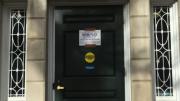The National Labor Relations Board (NLRB) has completed a final vote count for the graduate-student union election that took place in November 2016, finding that 1,526 students voted against forming a labor union and 1,396 voted in favor. This outcome has been widely expected, because of an earlier NLRB decision ordering a new election if the final count did not result in a victory for the union. Today’s tally means the University will need to hold a new election.
Last spring, after months of protracted hearings and disputes over voter eligibility following Harvard’s graduate-student union election, the regional NLRB had invalidated the results of that election and ordered a new one, after finding that the University did not provide a complete list of eligible voters prior to the election, which created confusion about eligibility: “The employer’s failure to provide a complete voter list interfered with the employees’ exercise of a free and reasoned choice.” Harvard challenged that decision and, last month, the NLRB rejected the appeal, arguing that “it raises no substantial issues warranting review.”
Both Harvard and the Harvard Graduate Student Union-United Auto Workers have one week to contest the results of the final tally. A new election is likely to take place in the coming months.
The graduate-student unionization election has been contested for a year, after an initial vote count indicated that 1,457 students had voted against unionizing and 1,272 voted in favor. But about 300 ballots remained uncounted because their eligibility remained contested. In April, an NLRB report found that 195 of those ballots were eligible, and that, consistent with the union’s objections to the election, Harvard had not provided a complete and accurate list of eligible voters, potentially preventing some students from voting, and thus should hold a new election. Harvard’s appeal of this ruling argued that the vote count should stand, and that most students who had been omitted from the list had still voted: 336 of 533 omitted students had cast ballots, out of an electorate of 4,475.









